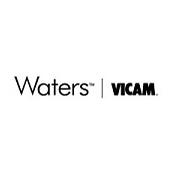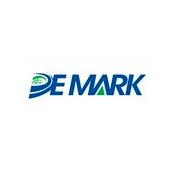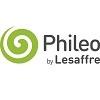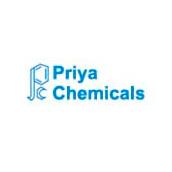Bacillus amyloliquefaciens CECT-5940 Spores on Broiler
Effect of Bacillus amyloliquefaciens CECT-5940 Spores on Broiler Performance and digestibility
The use of probiotics is an alternative to antibiotics as growth promoting and therapeutic in poultry production. Bacillus probiotics are growing in broiler production to replace antibiotic growth promoters and to reduce the inclusion of coccidiostat. The efficiency in pelleted broiler feeds and its compatibility with most of coccidiostat substances make it available to be included in grower feeds.
This report summarizes the information about the efficiency against pathogenic bacteria and benefits of the inclusion on performance production in broilers when using Bacillus amyloliquefaciens CECT 5940 in poultry feeds.
It is a sporulated, heat-resistant stable Bacillus originating from a non-emetic strain of "B. amyloliquefaciens". B. amyloliquefaciens was discovered by a Japanese scientist named Fukumoto, who gave the bacterium its name because it produced (faciens) a liquefying (lique) amylase (amylo). Alpha amylase from B. amyloliquefaciens is often used in starch hydrolysis. B. amyloliquefaciens is also known for its ability to degrade proteins extra-cellularly, it produces a source of subtilisin, an enzyme that catalyses the breakdown of proteins in a similar way to trypsin.
Bacillus amyloliquefaciens CECT 5940 is a microorganism that produces huge quantity of enzymes and can set them free "in vitro" in the culture media and "in vivo" in the caecal content once it has germinated. This fact allows the animals to obtain a higher degradability of the nutrients in the feed. B. amyloliquefaciens 5940 produces high quantities of protease and amylase; the degradation of starch and protein are therefore easily detectable in Agar-Starch and Agar-Gelatine mediums.
Bacillus amyloliquefaciens 5940 is also able to produce other types of extra-cellular enzymes like cellulases and xylanases. Additionally lactic acid production is greatly increased by the bacteria’s metabolism, causing a severe drop in Intestine pH, which affects pathogenic bacteria.
Bacillus amyloliquefaciens CECT 5940 is able to produce inhibitory substances (Bacteriocins) that inhibit the growth of pathogenic bacteria such E. coli and C. perfringens. Bacteriocins are proteins or peptides with bactericidal activity. These substances, which are frequently metabolites produced by various gram-positive and gram-negative microorganisms are compounds that display variable biochemical properties, inhibitory spectra, and mechanisms of action. Due to their potential use as natural preservatives, bacteriocins produced by lactic acid bacteria have been the subject of intensive investigation in recent years.
The Study about the bacteriocins release capacity in vitro of Bacillus amyloliquefaciens and its activity against Clostridium Spp and E. coli Spp and Yersinia enterocolitica.
B. amyloliquefaciens was pre-inoculated in Nutrient Broth (NB) and transferred to TSB medium (Difco). Culture conditions were: Circular agitation (200 mpr) at 37º C during 24h. Cells free extracts were obtained by centrifugation at 4000 mpr. The utilized technique for bactericide effect supernatant was plate diffusion.
The supernatant anti-microorganism activity of B.amyloliquefaciens against different strains are showed in the below tables:
Strain | pH 6.2 | pH 8.32 |
Clostridium butyricum CECT 361T | + | + |
Clostridium perfringens CECT 376T | +++ | +++ |
Clostridium perfringens CECT 486 | +++ | +++ |
Clostridium perfringens CECT 820 | ++++ | ++++ |
Clostridium perfringens CECT 821 | +++ | +++ |
Clostridium perfringens CECT 822 | ++++ | ++++ |
Clostridium histolyticum CECT 4109T | +++ | +++ |
+ : 1 cm of inhibition halo; ++: 1.5 cm of inhibition halo; +++: 1.8 cm of inhibition halo; ++++: 2.2 cm of inhibition halo; -- : absence of inhibition halo
| Strain | pH 6.2 | pH 8.05 |
Enterococcus faecalis CECT 4176 | - | - |
E. gallinarum CECT 970 | - | - |
E. faecium CECT 4515 | - | - |
Escherichia coli CECT 352 | + | + |
E. coli CECT 504 | + | + |
E. coli CECT 728 | + | + |
E. coli CECT 735 | + | + |
E. coli CECT 742 | + | + |
E. coli CECT 816 | + | + |
E. coli CECT 4076 | + | + |
E. coli CECT 4267 | + | + |
E. coli CECT 4782 | + | + |
E. coli CECT 4783 | + | + |
Staphylococcus aureus CECT 957 | - | - |
Yersinia enterocolitica CECT 754 | + | + |
+ : Growth inhibition. - : No growth inhibition
Two broiler experiments were conducted at the IRTA in Spain to evaluate the efficacy of a bacillary probiotic feed additive (Ecobiol®) containing 1 x 109 CFU/g of Bacillus amyloliquefaciens CECT 5940 on performance of broiler chickens. A completely randomised block design was applied in each study. The experimental design was applied to 308 Ross male broilers in both the starter (0-21d) and the grower (22-42) phases, from day-old to slaughter at 42 days of age.
In experiment I, there were two treatments, a basal diet (control), and basal diet with 1 Kg/t, applied to 12 cage-pens of 12 broilers each. Mortality was considered normal (mean 4.3%) and was not affected by treatment. During the grower phase, probiotic supplementation improved feed to gain ratio (1.99 vs 1.96 g gain/g feed, for control vs Ecobiol; P<0.05). Improvements were also observed over the global period, and broilers supplemented with the probiotic converted better than control birds (1.80 vs. 1.78 g feed/g gain; P<0.05).
Parameter | Control | 1 Kg/mt Ecobiol® | EEM | Signification |
| Initial body weight 0d, g | 46.4 | 46.4 | - | NS |
Body weight 21 d | 718 | 715 | 28.0 | NS |
| DWG 0-21 d, g | 32.0 | 31.8 | 1.34 | NS |
ADFI 0-21 d, g | 45.7 | 45.2 | 1.85 | NS |
FCR 0-21 d | 1.430 | 1.420 | 0.039 | NS |
Body weight 42 d, g | 2113 | 2118 | 70.7 | NS |
DWG 21-42 d, g | 69.8 | 70.2 | 2.78 | NS |
ADFI 21-42 d, g | 139.0 | 137.6 | 5.21 | NS |
FCR 21-42 d | 1.993 a | 1.962 b | 0.041 | < 0.05 |
DWG 0-42 d, g | 50.4 | 51.5 | 1.72 | NS |
ADFI 0-42 d, g | 90.9 | 90.1 | 3.03 | NS |
FCR 0-42 d | 1.803 a | 1.782 b | 0.025 | < 0.05 |
In experiment II, two experimental treatments with 12 floor-pens of 60 broilers each were used: 1) basal diet (control), and 2) basal diet with 1 g/kg of probiotic, the recommended commercial dose. Mortality was considered normal (mean 4.5%) and was not affected by treatment.
During the grower phase, probiotic supplementation improved feed to gain ratio (1.91 vs 1.88 g gain/g feed; P<0.05). For the global period, broilers supplemented with the probiotic converted better (1.83 vs 1.80 g feed/g gain; P<0.01) and tended to eat less feed (102.7 vs 100.2 g/d; P<0.10) than control birds. In conclusion, the data from these studies provide evidence that bacillary probiotic (Ecobiol) supplementation improves performance in broilers.
Parameter | Control | 1 Kg/mt Ecobiol® | EEM | Signification |
| Initial body weight 0d, g | 43 | 43 | - | NS |
Body weight 21 d | 764 | 763 | 20.0 | NS |
DWG 0-21 d, g | 34.4 | 34.3 | 0.97 | NS |
ADFI 0-21 d, g | 56.7 | 55.8 | 1.26 | NS |
FCR 0-21 d | 1.651 | 1.628 | 0.046 | NS |
Body weight 42 d, g | 2399 | 2382 | 82.5 | NS |
DWG 21-42 d, g | 77.8 | 77.0 | 3.35 | NS |
ADFI 21-42 d, g | 148.6 | 144.6 | 5.89 | NS |
FCR 21-42 d | 1.911 a | 1.879 b | 0.032 | < 0.05 |
DWG 0-42 d, g | 56.1 | 55.7 | 1.96 | NS |
ADFI 0-42 d, g | 102.7 x | 100.2 y | 3.39 | < 0.1 |
FCR 0-42 d | 1830 a | 1800 b | 0.024 | < 0.05 |

In a recent experiment in Veterinarian University (Murcia-Spain) a total of 960 Ross 308 day-old broilers were used to study the efficacy of a probiotic feed additive (EcobiolÒ) containing1 x 109 CFU/gof Bacillus amyloliquefaciens CECT 5940. A completely randomized design was applied using three experimental treatments: Treatment T1 designated as control (no added probiotic), and Treatments T2 and T3, the control diet with 500, and 1,000 mg/kg of probiotic, supplying 5 x 108, and 1 x 109 CFU/kg feed, respectively.
The experimental design was applied to 10 replicates (pens) of 24 broilers (half males and half females) per treatment in both the starter (0-21 d) and the grower (21-42 d) phases. The experimental diets, based on barley, wheat and soya, were presented as mash, did not contain any coccidiostat or growth promoter and were fed ad libitum to the animals.
At the end of the trial, four birds per replicate were sacrificed, the ileum content collected and freeze-dried. Apparent ileal digestibility (AID) of crude protein, ether extract, starch and crude fiber were calculated using acid insoluble ash as indigestible marker. Body weight (g), mortality (%), weight gain (g/day), feed intake (g/day), feed to gain ratio (g feed/g weight gain), the European Production Efficiency Factor (EPEF), and AID coefficients were analyzed as a completely randomized design by GLM procedure of SAS.
Probiotic supplementation at 1,000 mg/kg improved feed to gain ratio (1.98 vs 1.89 g feed/g gain from 22-42 d, P=0.06, and 1.91 vs 1.84 for 0-42d, P<0.05) and EPEF at 42 d (273 vs 299; P<0.05) compared to control diet.
In addition, broilers supplemented with the probiotic at 1,000 mg/kg showed higher AID of crude protein (+8.1%; P<0.001), ether extract (+7.3%; P<0.05), starch (+3.8%; P<0.05), and crude fiber (P<0.05) than control birds. No differences were detected in performance when the probiotic feed additive was supplementation at 500 g doses. It is concluded that B. amyloliquefaciens probiotic feed additive at 1,000 mg/kg improves performance and aid of broilers fed wheat-barley/soya diets.
| Parameter | Control | 500 g/mt Ecobiol® | 1 Kg/mt Ecobiol® | EEM | Signification |
| Body weight 0d, g | 41.4 | 41.2 | 41.5 | - | NS |
Body weight 21 d | 677.1 | 691.5 | 680.4 | 11.64 | NS |
Body weight 42 d, g | 2432 | 2451 | 2481 | 39.41 | NS |
Mortality, % | 8.33 | 6.40 | 5.35 | 1.75 | NS |
DWG 0-21 d, g | 30.27 | 30.97 | 30.43 | 0.56 | NS |
ADFI 0-21 d, g | 52.09 | 50.78 | 51.48 | 0.91 | NS |
FCR 0-21 d | 1.726 | 1.647 | 1.694 | 0.05 | NS |
DWG 21-42 d, g | 83.54 | 83.76 | 85.75 | 1.79 | NS |
ADFI 21-42 d, g | 165.0 | 161.3 | 162.0 | 2.65 | NS |
FCR 21-42 d | 1.978 x | 1.929 xy | 1.894 y | 0.03 | < 0.1 |
DWG 0-42 d, g | 56.91 | 57.36 | 58.09 | 0.94 | NS |
ADFI 0-42 d, g | 108.6 | 106.1 | 106.7 | 1.34 | NS |
FCR 0-42 d | 1.910 a | 1.851 ab | 1.840 b | 0.02 | < 0.05 |
| EPEF | 273.5 b | 290.6 ab | 299.0 a | 8.1 | < 0.05 |

| Conclusion Ecobiol® (Bacillus amyloliquefaciens CECT 5940 spores) are thought to act in the intestinal tract of poultry reducing the effect of pathogenic bacteria such as Clostridium perfringens, Escherichia coli, and Yersinia. and producing enzymes amylases and proteases making the feed more digestible. This favours the proliferation of lactic acid bacteria and produces lactic acid as by product of starch fermentation. In all the three broiler chicken trials significant improvements in feed conversion rate have been observed for growing period when using supplemented diets with Ecobiol® . improving the feed efficiency 2-4 %. Numerically differences were also observed for feed intake, broilers feeds with Ecobiol® intake less feed because they perform better the diet, mortality of broiler decreases with the inclusion of the probiotic. |

Is this improved performance better than that of inclusion of acidifiers with the feed in broiler feed?
Hettiarachchi, D.C. from Sri Lanka













